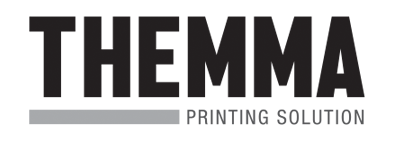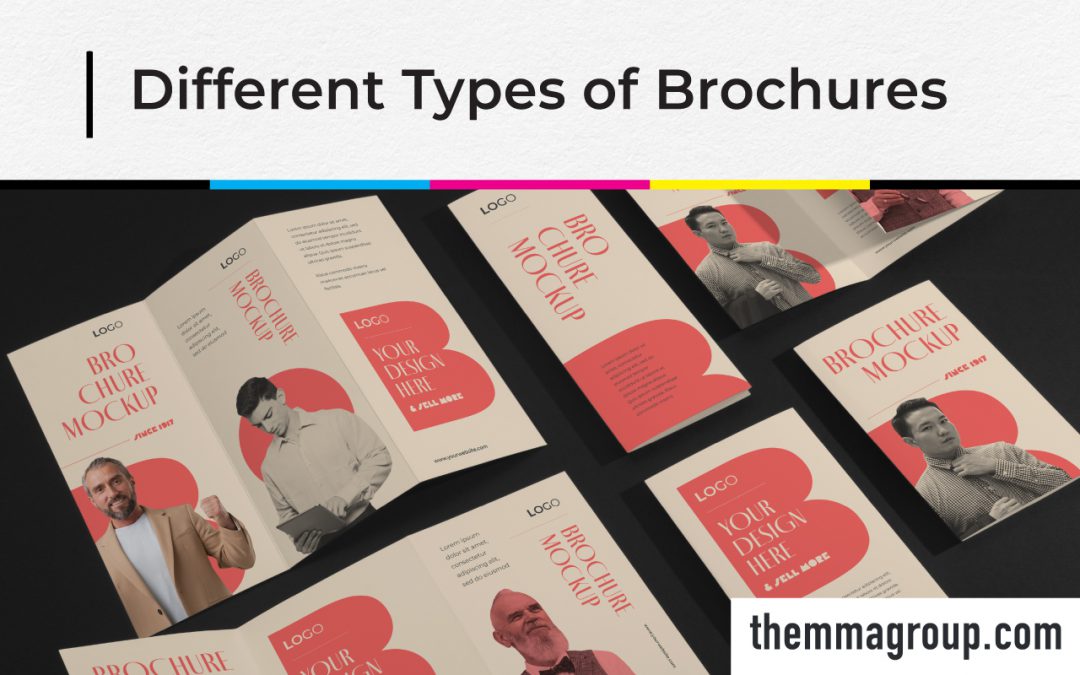What Are the Different Types of Brochures? And Setting Pages on the Artboard in Adobe Illustrator
Half-Fold / Bi-Fold

One of the most popular formats for corporate use, the half-fold or bi-fold brochure is created by folding a single sheet of paper into two panels, resulting in four pages. This type is ideal for simple presentations, event programs, or company profiles. It provides ample space for larger images, bold headlines, and straightforward content, making it a go-to choice for businesses seeking a professional look.
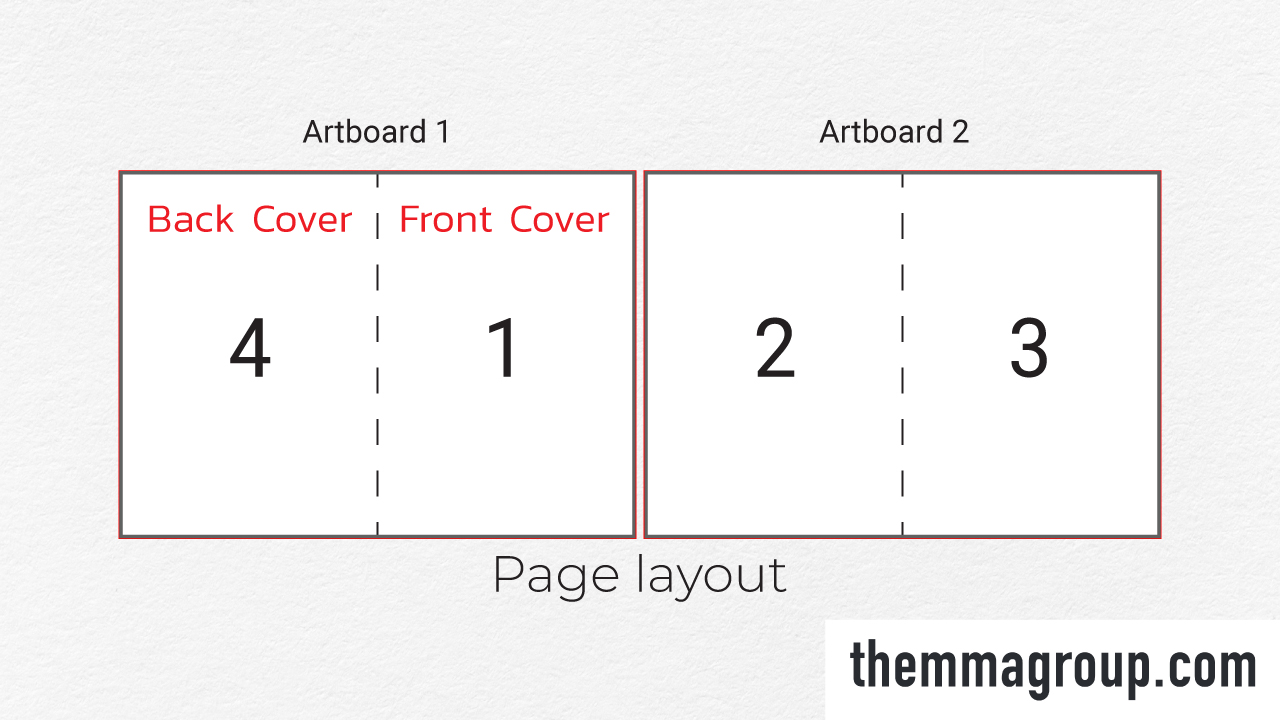
Page layout can be used as a reference for book cover layout.
Tri-Fold (Letter Fold)
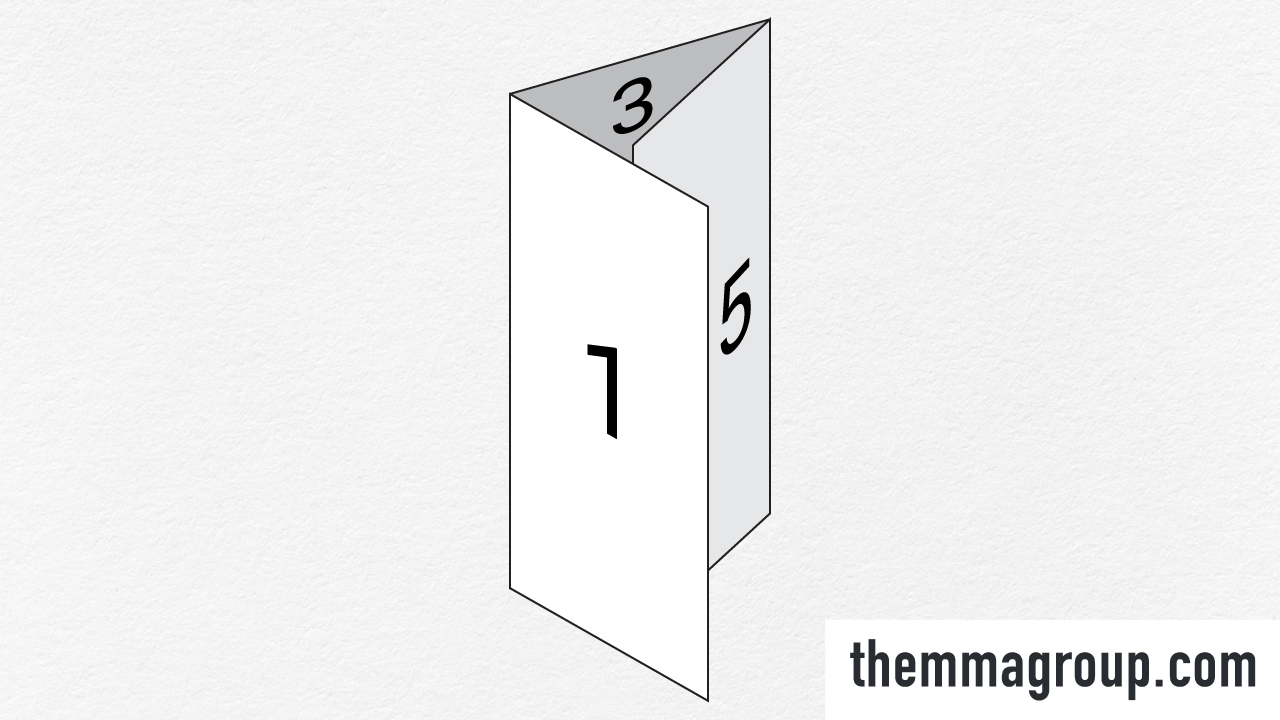
The tri-fold brochure is one of the most widely used formats for marketing and informational materials. Its design, which folds a sheet into three equal sections, offers six panels that are compact and easy to navigate. Commonly used for travel guides, product catalogs, and menus, this format is favored for its ability to present organized and sequential information effectively.

Design precautions for artwork: In this type of folding, the last part of the content should be about 2-3 millimeters smaller than the other pages because in this type of folding, the end of the last part of the paper will return to the middle between the first two parts of the content. If the last part is larger than or equal to the first two parts, when actually folding the work, there is a chance that the first and second parts will not be able to be folded together. The thicker the paper, the more you have to take this into account.

Z-Fold
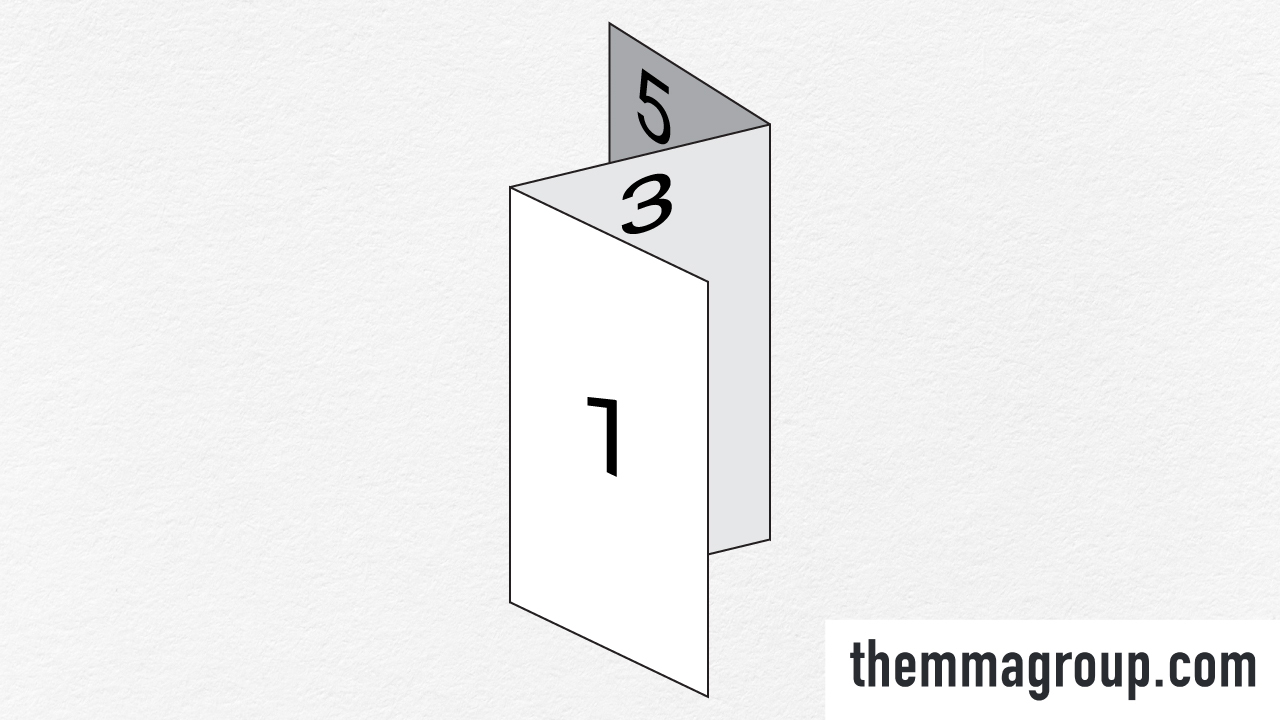
A popular choice for dynamic and visually engaging designs, the Z-fold brochure features three connected panels that open in a zigzag pattern. Perfect for maps, invitations, and step-by-step instructions, its layout encourages easy navigation. This versatility makes it a preferred option for travel maps and itineraries that require content to flow naturally.
Unlike the Tri-Fold, the Z-fold ensures that all panels are the same size, offering a balanced and cohesive layout. However, extra consideration is needed when designing page 4, as it doubles as the back cover. This added complexity makes the Tri-Fold a more popular choice for simpler and more straightforward designs.
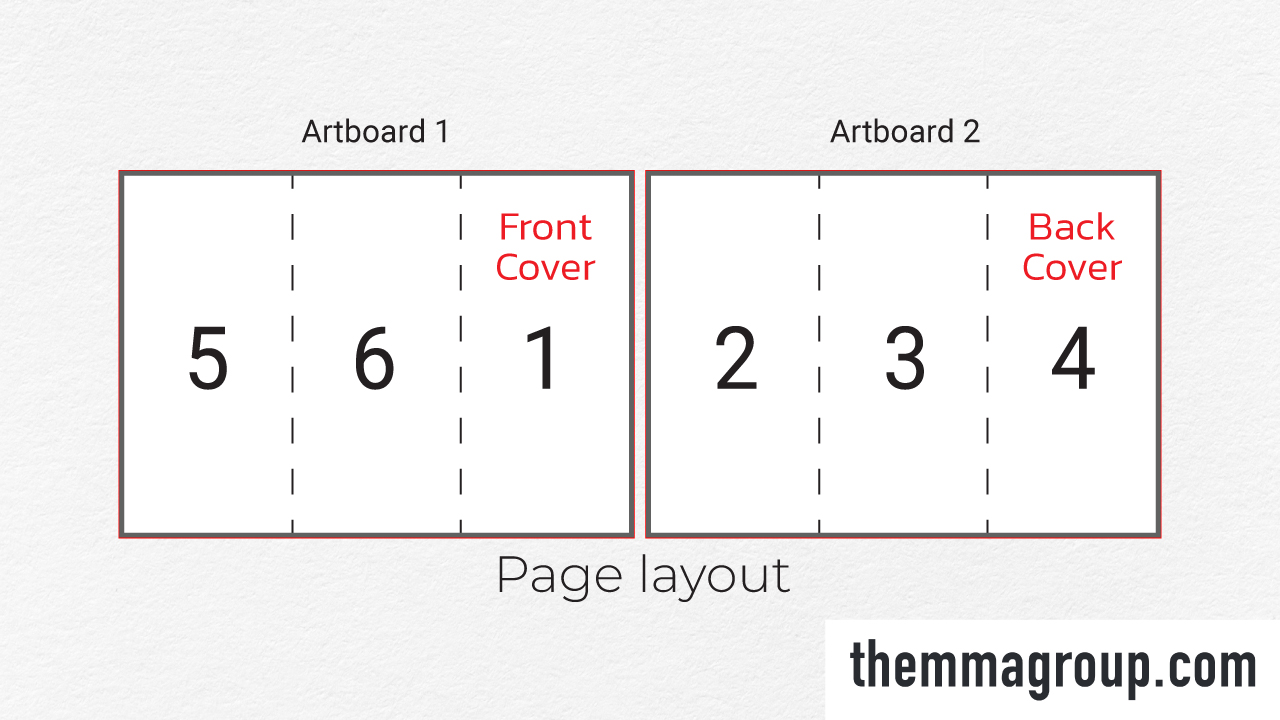
Accordion Fold
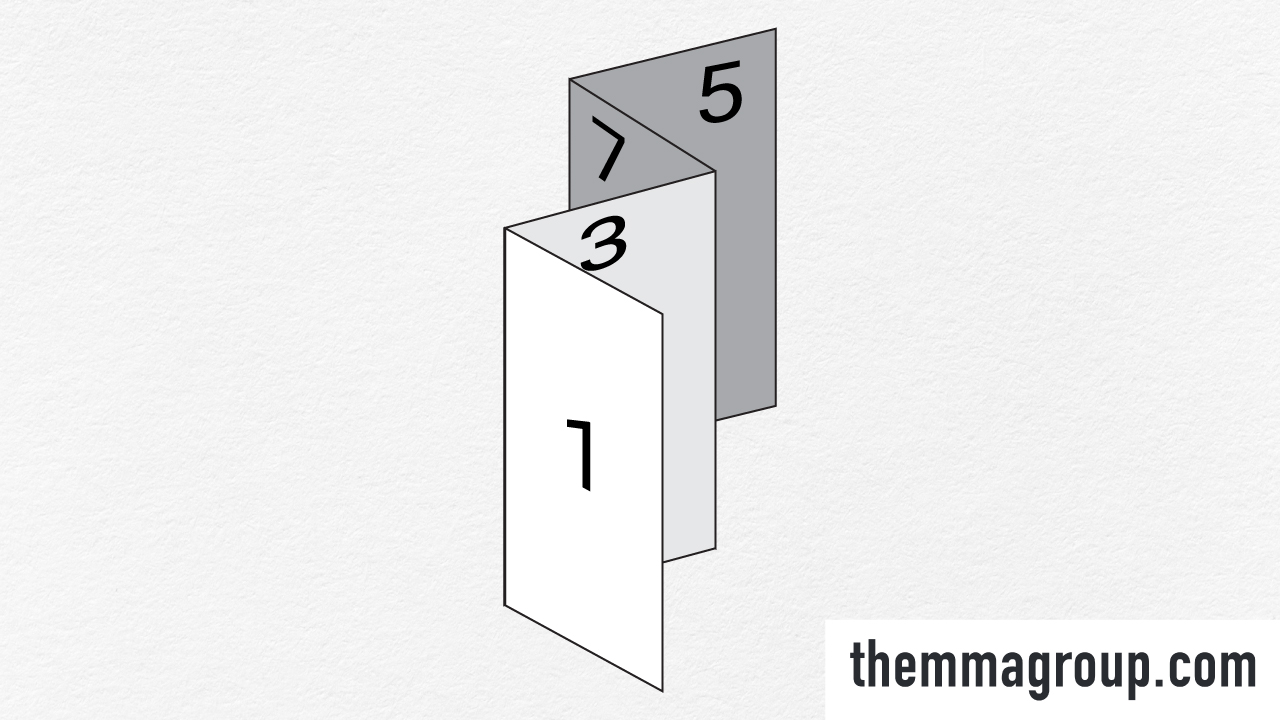
Similar to the Z-Fold, the Accordion Fold expands the content to four or more parts, with three or more folds creating a fan-like layout. This format is a frequently used option for brochures requiring multiple panels, such as event schedules or informational guides. Its design offers flexibility for presenting detailed or lengthy content in an organized manner. This format is particularly popular for travel brochures and event guides, where seamless information flow is essential.

Double Parallel Fold

Double parallel folds create four vertical panels by folding the sheet in half twice. This style is used for brochures with dense information, such as educational materials, technical guides, or detailed product descriptions. Its compact design ensures a clean presentation while maximizing content space.

Design precautions for artwork: As with the Tri-Fold
Roll Fold

Roll-fold brochures involve rolling the panels inward, one over the other, creating a compact format with multiple panels. This style is ideal for step-by-step tutorials, product showcases, or storytelling content. It’s commonly used for marketing campaigns where each panel builds upon the previous one to deliver a clear, progressive message.
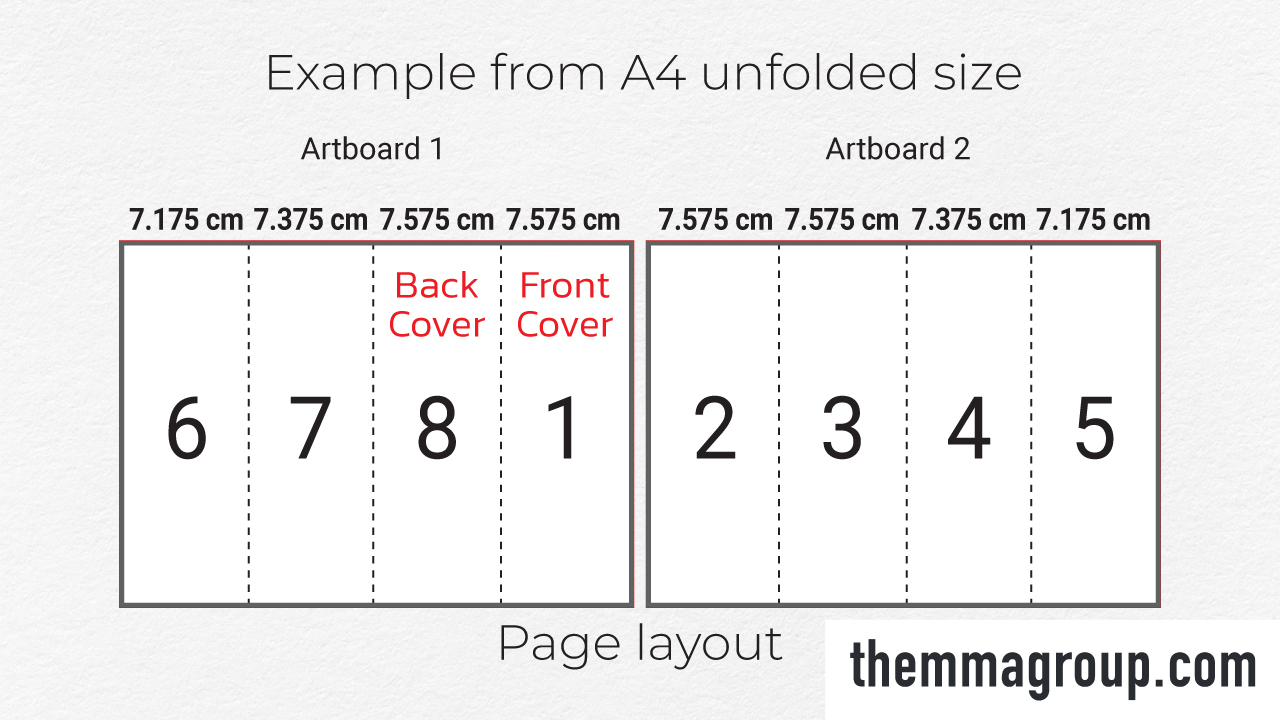
Design precautions for artwork: Similar to the Tri-Fold, due to the two folds, there is a slight condition that the last panel (page 5, page 6) must be the smallest width, followed by the third panel (page 4, page 7), and the second panel (page 3, page 8) and the first panel (page 1, page 2) must be the same size and widest so that the final fold fits together perfectly (if the paper is too thick or the final fold does not fit together perfectly, the width of the first panel can be adjusted a little more, about 0.5 – 1 mm).
Gate Fold

Gate-fold brochures feature two outer panels that fold inward to meet in the center, resembling gates. This design is suitable for brochures that need to emphasize important content in the center, such as key visuals or detailed information. The folded outer panels act as a “window,” creating an interactive and engaging element. Commonly used for luxury product promotions, event invitations, or exclusive offers, this format enhances the appeal of the brochure while providing a dramatic space for impactful messaging.

Design precautions for artwork: If the paper is thick or the window folds do not meet properly, adjust the left and right contents to be slightly wider (about 0.5 – 1 mm each side).
Double Gate Fold

A double gate fold adds an extra layer to the standard gate fold, folding the brochure once more inward. This creates eight panels, making it suitable for presenting detailed content such as real estate portfolios, large event schedules, or high-end product collections while maintaining a refined look.
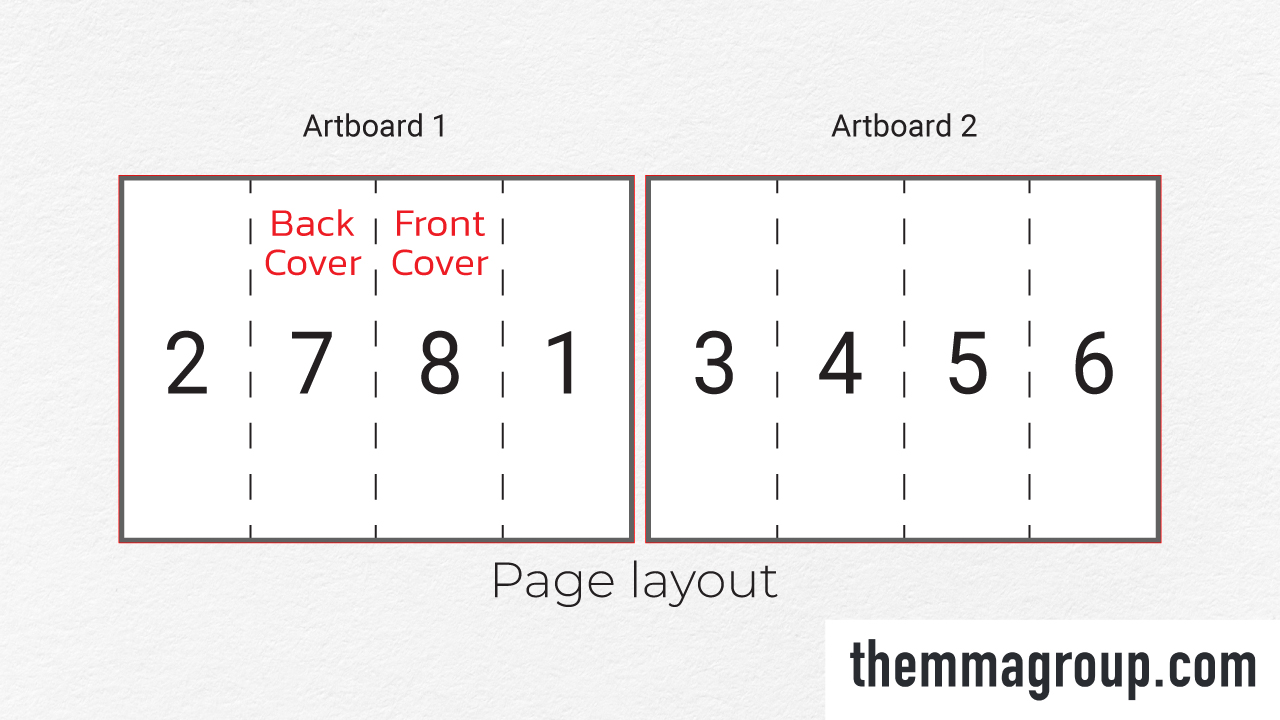
Design precautions for artwork: The first panel (page 1, page 3) and the last panel (page 2, page 6) should be reduced in width by 1 – 2 mm as these panels must be folded inward.
Half-Fold & Then Tri-Fold

This brochure combines a half-fold followed by a tri-fold, resulting in eight compact panels. It is particularly suitable for brochures that need to present a lot of information, such as catalogs, diagrams, or maps. The format provides ample space for detailed content while keeping the design organized and portable, making it ideal for complex presentations or promotional materials.

Design precautions for artwork: The placement of content on pages 4, 5, 6, if it is not a panel that is a continuation of pages 1, 2, 3, the content should be turned upside down before printing because with this type of folding, if we do not unfold the fold in half, turning it upside down will make the content on pages 1 – 6 aligned without us having to turn it back and forth.
Since when folded in half, the work will be in the same shape as a Tri-Fold, so the last panel (pages 3, 6, 9, 12) should be 1 – 3 millimeters wider than the other panels.
Quarter Fold / French Fold
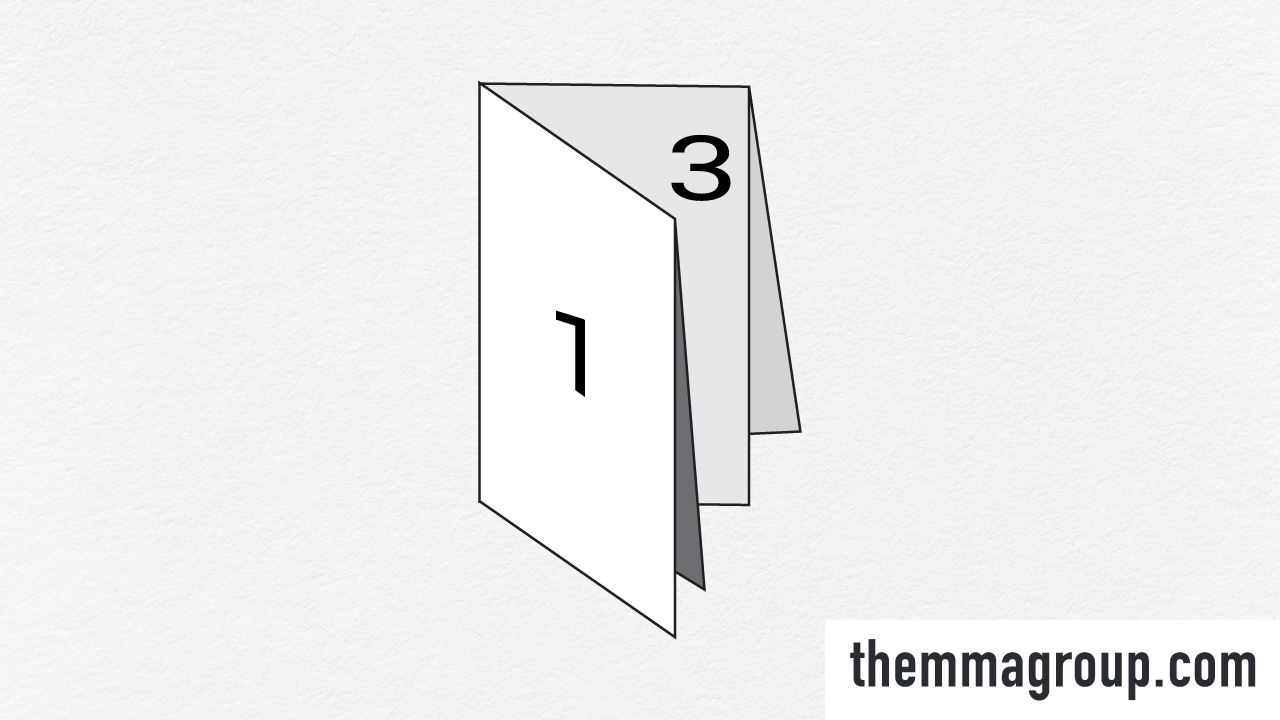
A quarter fold, also called a French fold, involves folding the sheet in half horizontally and then vertically, creating four equal sections. This style is ideal for maps, event programs, or compact product lists. Its simple design ensures easy unfolding and refolding for practical use.
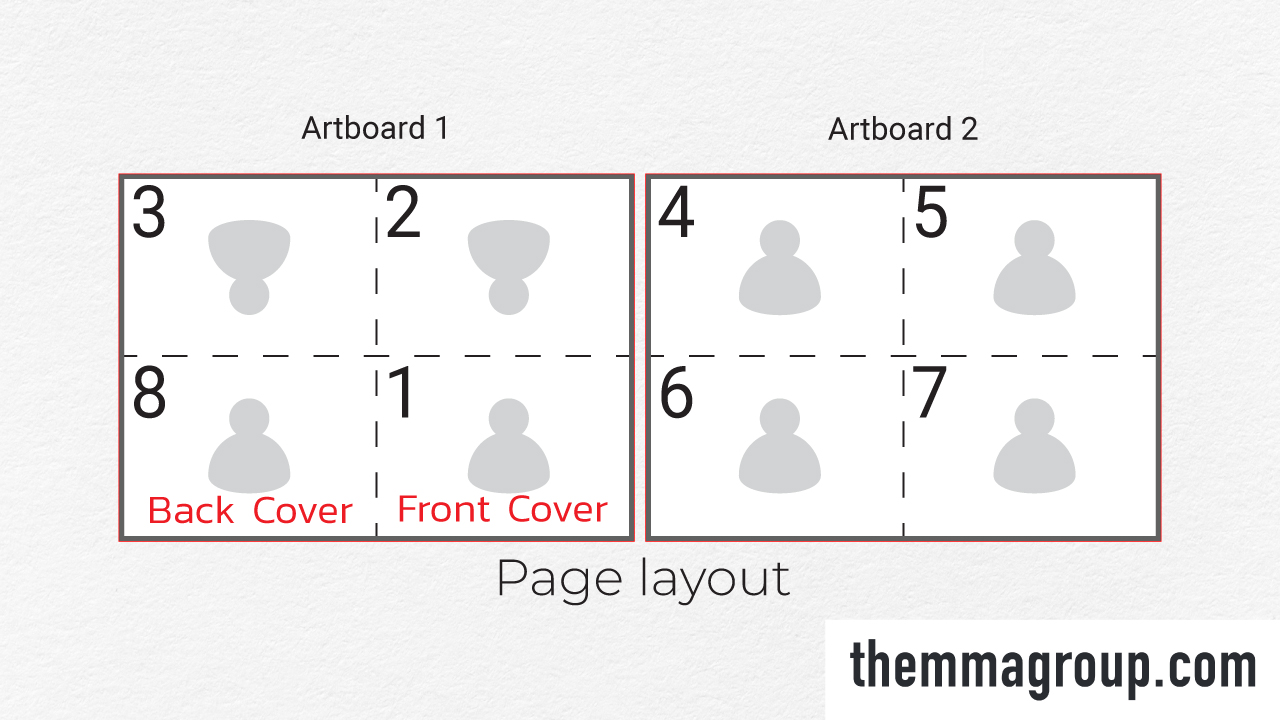
Design precautions for artwork: Same as Caution 1 of Half-Fold & Then Tri-Fold.
Contact Us:
No matter how large or small a request, please feel free to contact us using the form below or send us an e-mail. Our team will respond to your request as soon as possible.
Themma Group Co., Ltd.
Address : 829 Soi Pattanakarn 97, Pattanakarn Rd., Prawet, Bangkok 10250
Phone : +662 722 9255
Fax : +662 722 9144
Email :info.themmagroup@gmail.com
Themma Group Co., Ltd.
829 Soi Pattanakarn 97, Pattanakarn Rd., Prawet, Bangkok 10250
Phone : +662 722 9255
Fax : +662 722 9144
Email : info.themmagroup@gmail.com
